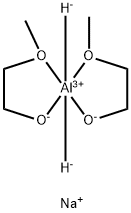
60-18-4
- Product Name:L-Tyrosine
- Molecular Formula:C9H11NO3
- Purity:99%
- Molecular Weight:181.19
Product Details:
CasNo: 60-18-4
Molecular Formula: C9H11NO3
Purity: 99%
Synonyms: 3-(4-HYDROXYPHENYL)-L-ALANINE; 2-Amino-3-(4-hydroxyphenyl)-propanoic acid; 2-AMINO-3-(P-HYDROXYPHENYL)PROPIONIC ACID; 4-HYDROXYPHENYLALANINE; FEMA 3736; H-L-TYR-OH;H-TYR-OH; L-3-[4-HYDROXYPHENYL]ALANINE
Melting point: >300 °C (dec.) (lit.)
alpha: -11.65 º (c=5,DIL HCL/H2O 50/50)
Boiling point: 314.29°C
Density: 1.34
Refractive index: -12 ° (C=5, 1mol/L HCl)
Fp: 176 °C
Solubility: 1 M HCl: 25 mg/mL
pka: 2.2(at 25℃)
Form: powder
Color: White to Pale-brown
Odor: odorless
Stability: Stable. Incompatible with strong oxidizing agents, strong reducing agents
Chemical Properties:
L-Tyrosine is odorless and has a bland taste. L-Tyrosine is a nonessential amino acid, as it is synthesized in the human body from phenylalanine. It is a precursor to epinephrine, norepinephrine and dopamine, three important neurotransmitters.
Uses:
L-Tyrosine is one of the 22 proteinogenic amino acids that are used by cells to synthesize proteins. L-Tyrosine is biologically converted from L-phenylalanine and is in turn is converted to L-DOPA and further converted into the neurotransmitters: dopamine, norepinephrine, and epinephrine.
Biochem/physiol Actions:
L-Tyrosine consists of a polar side chain and is a non-essential amino acid. It is utilized by cells to synthesize proteins that are involved in signal transduction. L-Tyrosine acts as a receiver of phosphate groups that are transferred by kinases.
Relevant Products
-
Apixaban
CAS:503612-47-3
-
L-Tyrosine disodium salt
CAS:69847-45-6
-
Sodium bis(2-methoxyethoxy)aluminiumhydride
CAS:22722-98-1








